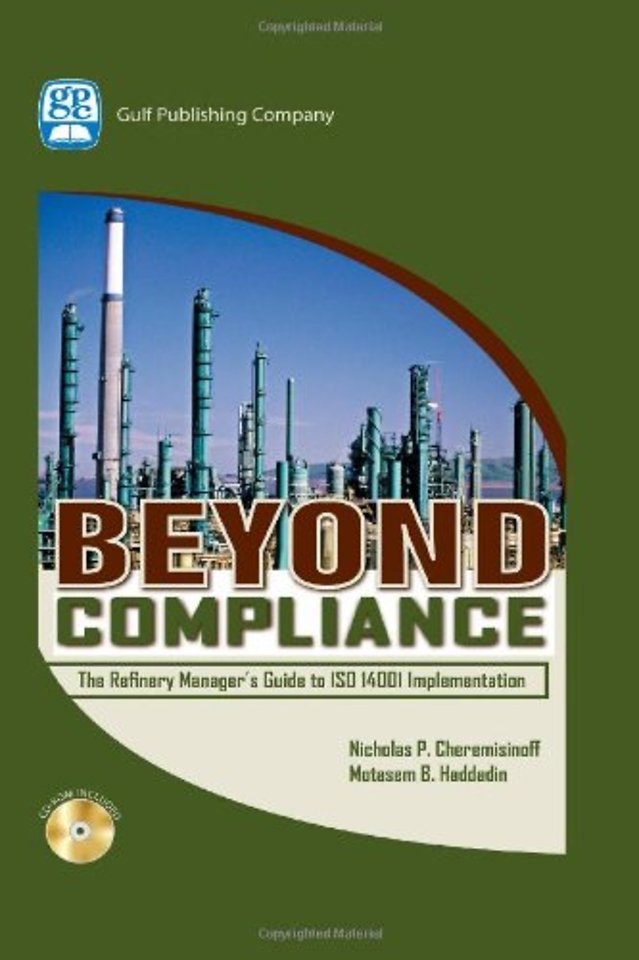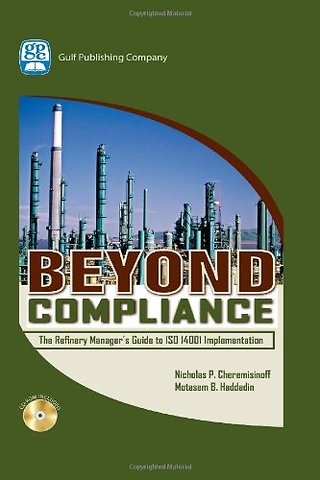<br>Preface</br><br>About the Authors</br><br>1 Refining Operations and the Sources of Pollution</br><br> Introduction</br><br> 1.1 The Nature of Pollution</br><br> 1.2 Desalting</br><br> 1.3 Distillation</br><br> 1.3.1 Atmospheric Distillation</br><br> 1.3.2 Vacuum Distillation</br><br> 1.4 Downstream Processing Operations</br><br> 1.4.1 Thermal Cracking or Visbreaking</br><br> 1.4.2 The Coking Process</br><br> 1.4.3 The Catalytic Cracking Process</br><br> 1.4.4 The Catalytic Hydrocracking Process</br><br> 1.4.5 The Hydrotreating and Hydroprocessing Processes</br><br> 1.4.6 Alkylation</br><br> 1.4.7 Isomerization</br><br> 1.4.8 Polymerization</br><br> 1.4.9 Catalytic Reforming</br><br> 1.4.10 Solvent Extraction</br><br> 1.4.11 Chemical Treating</br><br> 1.4.12 Dewaxing</br><br> 1.4.13 Propane Deasphalting</br><br> 1.5 Supporting Operations and Technologies</br><br> 1.5.1 Wastewater Treatment Processes</br><br> 1.5.2 Sour Gas Treatment and Sulfur Recovery</br><br> 1.5.3 Additive Production and Hydrogen Production Technologies</br><br> 1.5.4 Heat Exchangers and Boiler Operations</br><br> 1.5.5 Plantwide Blowdown Systems</br><br> 1.5.6 Blending Operations</br><br> 1.5.7 Storage Tanks and Loading and Unloading Operations</br><br> 1.5.8 Cooling Towers</br><br> Recommended References</br><br>2 Refinery Waste and Pollution Profile</br><br> Introduction</br><br> 2.1 Refinery Material Output Matrices</br><br>3 What an Environmental Management System is All about</br><br> Introduction</br><br> 3.1 What an EMS is</br><br> 3.2 What an EMS Standard is</br><br> 3.2.1 General</br><br> 3.2.2 BS 7750</br><br> 3.2.3 EMAS</br><br> 3.2.4 ISO 14000</br><br> 3.2.5 Comparing the Standards</br><br> 3.3 Understanding ISO 14001</br><br> 3.3.1 The Basic Clauses</br><br> 3.3.2 Compliance versus Conformance with Environmental Performance Standards</br><br> 3.4 EMS Drivers</br><br> 3.5 A Review and What Comes Next</br><br>4 Components of an Environmental Management System</br><br> Introduction</br><br> 4.1 Commitment and Environmental Policy</br><br> 4.2 Initial Environmental Review</br><br> 4.3 Planning the Environmental Policy</br><br> 4.3.1 General</br><br> 4.3.2 What Environmental Aspects are</br><br> 4.3.3 Legal and Other Requirements</br><br> 4.3.4 Objectives and Targets</br><br> 4.3.5 Devising an Environmental Management Program</br><br> 4.4 Implementing the Environmental Policy</br><br> 4.5 Measuring and Evaluating</br><br> 4.5.1 Developing an Environmental Effects Register</br><br> 4.5.2 Monitoring and Measuring Hardware</br><br> 4.5.3 Compliance Status</br><br> 4.5.4 Environmental Cost-Accounting Data</br><br> 4.5.5 Combining Concepts with Pollution Prevention</br><br> 4.6 Audits and Management Review</br><br> 4.7 Environmental Reporting and Communication</br><br> Recommended References and Websites</br><br>5 Tools for Conducting the Initial Environmental Review</br><br> Introduction</br><br> 5.1 U.S. Regulations, Waste Classifications, and SIC Codes</br><br> 5.1.1 U.S. Environmental Laws and Regulations</br><br> 5.1.2 Waste Classifications</br><br> 5.1.3 SIC Codes</br><br> 5.2 IER Auditor</br><br> 5.3 Environmental Aspects (EA) Evaluator</br><br> 5.4 Closing Remarks</br><br>Index</br><br></br>

